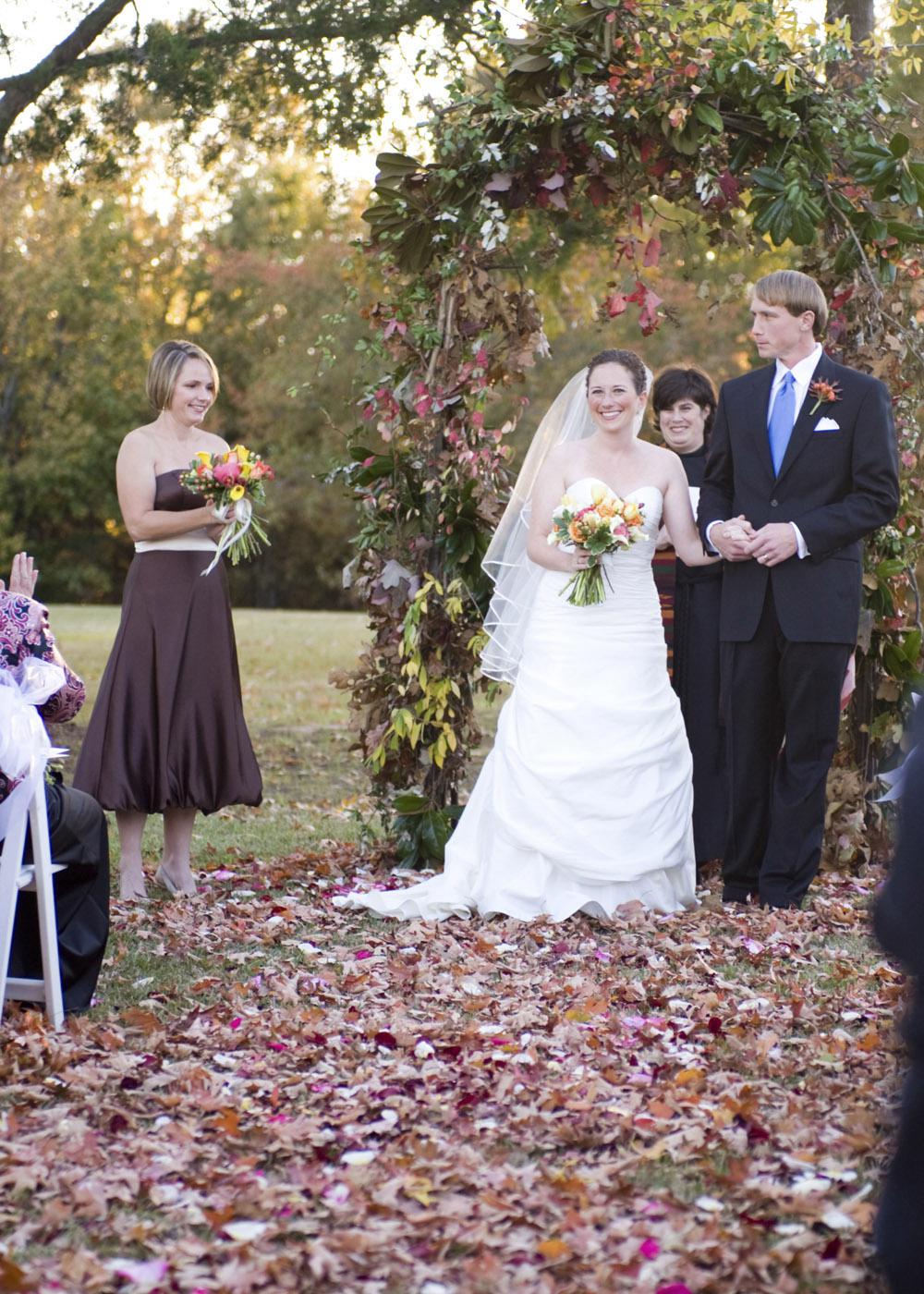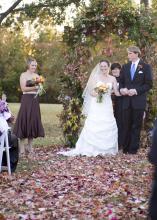Information Possibly Outdated
The information presented on this page was originally released on January 12, 2012. It may not be outdated, but please search our site for more current information. If you plan to quote or reference this information in a publication, please check with the Extension specialist or author before proceeding.
Eco-friendly weddings benefit people, planet
MISSISSIPPI STATE – Couples do not have to sacrifice beauty to plan a wedding that respects the environment and reflects their green values.
Brian Templeton, an Extension associate with Mississippi State University’s Department of Landscape Architecture, incorporated his love of nature into his 2008 wedding and reception.
“We wanted to get married outside, and we took a gamble, as we got married in November,” Templeton said. “We chose a site with sentimental value on family property, which also saved money. We performed a regular schedule of pruning and capitalized on the existing landscapes.
“While no property is perfect, by carefully mapping out how people would enter the space, the paths of traffic and the view sheds, we were able to take advantage of interesting views and remove or minimize the impact of less appealing elements,” he said.
Templeton and his bride, Karen, worked with Lynette McDougald of The University Florist to incorporate local resources into the decorating scheme.
“She brought an arch and decorated it with native materials collected from the property,” he said. “She added in a few ornamental flowers for color. These were minimal touches for accents and highlights and allowed us to honor a little bit of tradition.”
Templeton and McDougald gathered fall leaves to decorate the aisle instead of using a runner or rose petals.
“We were lucky because the leaves from the sugar maples, red maples and oaks turned color right before our wedding, so we had beautiful fall colors. Plus, the leaves were free and environmentally friendly,” he said.
By having the ceremony and reception at the same location, the Templetons minimized transportation and thus environmental pollution.
“We encouraged carpooling to and from the hotels and introduced local friends to out-of-town guests so people had the opportunity to share rides,” he said.
The Templetons used a local caterer and local sources for much of the food served at their reception.
“Our menu included Mississippi catfish, sweet potatoes, and MSU cheeses and ice cream,” he said.
Jeremiah Dumas, director of MSU’s Environmental Collaborative Office, agreed with Templeton that sustainability is not about giving up fashion or quality.
“There are many ways to incorporate local, sustainable ideas into a wedding,” he said. “When I think of events I have attended, it was the foods, textures, places and products that were unique and local that are most memorable to me. Nothing is more elegant or in style than local flavors, sights and sounds.”
Some couples may use the once-in-a-lifetime nature of a wedding as an excuse to disregard environmental ethics. However, given the large crowds, amount of consumption, and travel involved in weddings, the environmental impact can be substantial, Dumas said.
“It is important to consider proper stewardship in everything we do,” he said.
Amanda Harkness, writer for The Green Bride Guide, a book and website devoted to eco-friendly weddings, said small choices add up.
“If every wedding this year used a disposable aisle runner and those runners were laid end to end, they would circle the globe twice,” she said. “If every engaged couple made just one small green choice, that would be 2.5 million greener choices a year, and that is an amazing impact.”
Greener choices do not have to be difficult or time consuming, Harkness said.
“Feature local or seasonal foods on the menu. Create a wedding registry that incorporates environmentally friendly gifts or ask your guests to donate to a favorite charity,” she said. “Skip the plastic throw-away wedding favors. Jewelry for the bridal party can be vintage, antique, from a local artist, or made from sustainable or ethically sourced materials. Let the wedding party wear dresses and suits they already own and will wear again.
“Couples need only make certain small commitments to the green movement, and these choices can make a world of difference.”




